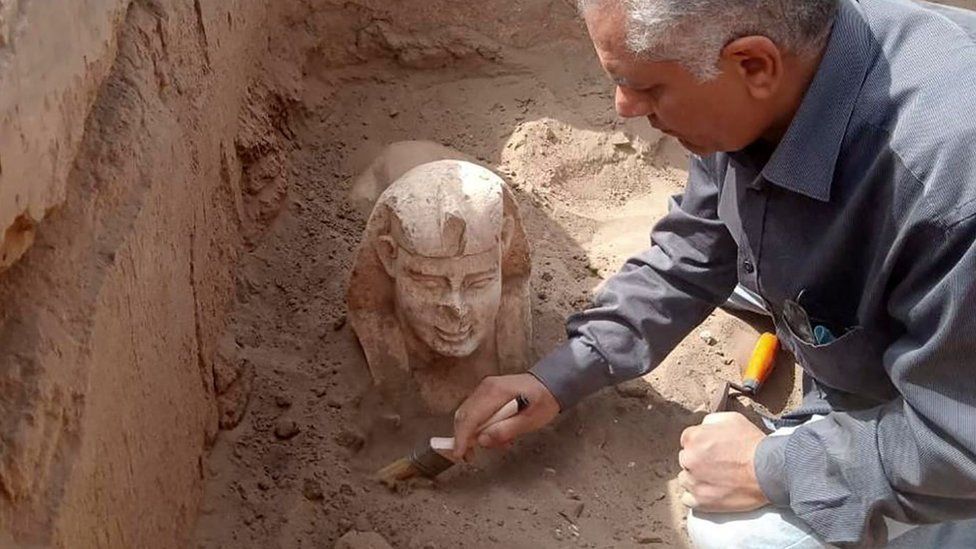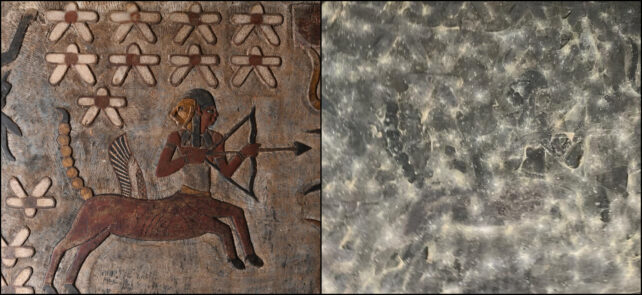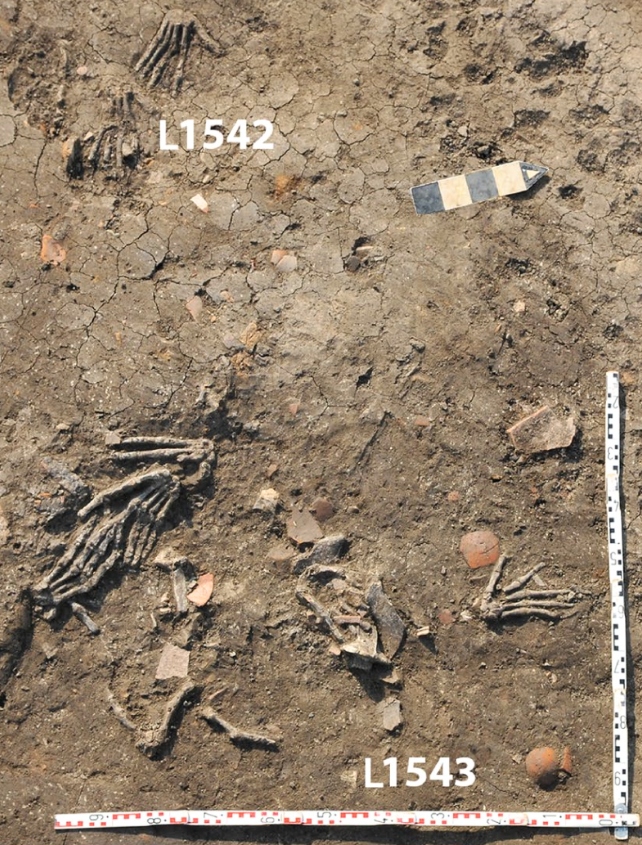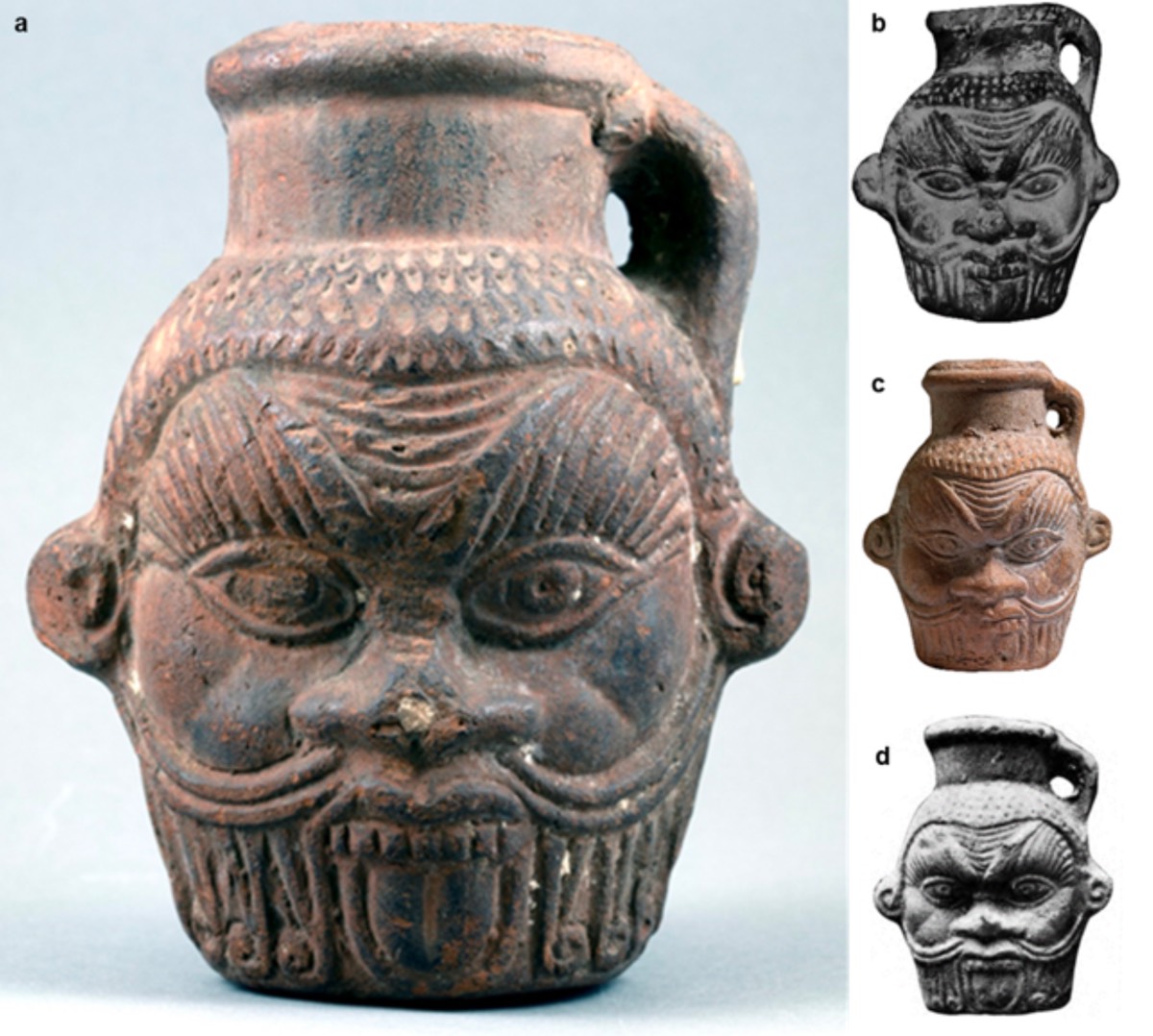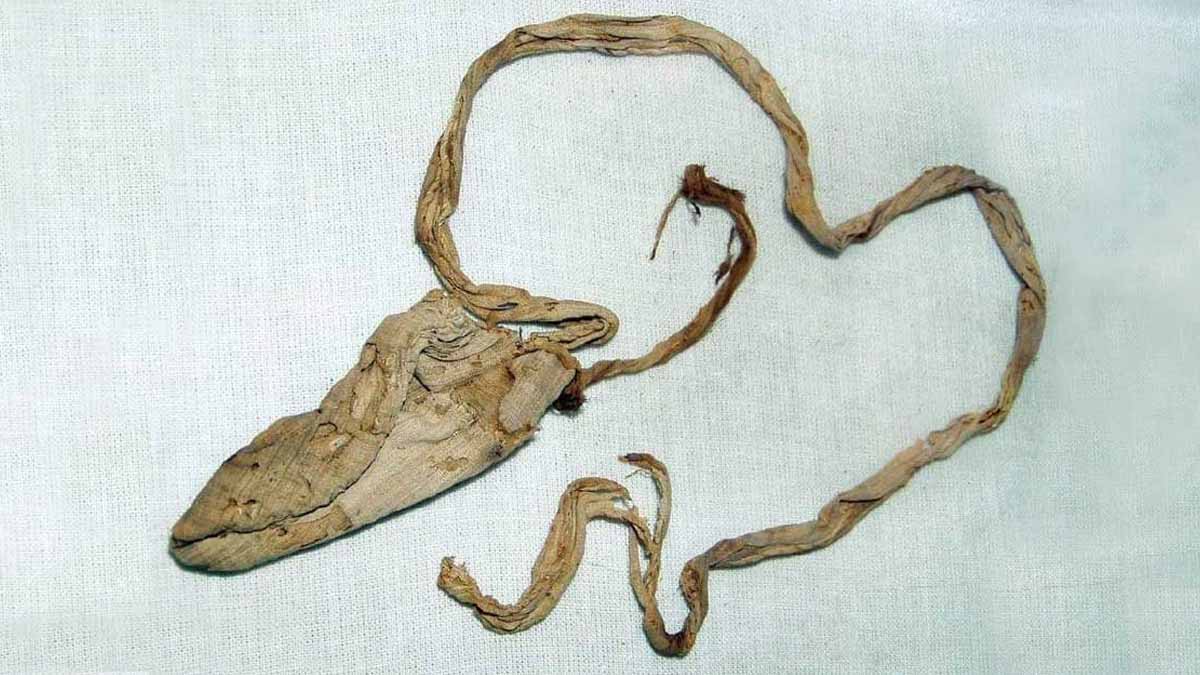Mummies With Gold Tongues Found Inside 2,500-Year-Old Tombs in Egypt
Archaeologists have unearthed two tombs, containing the mummified remains of a man and woman who died about 2,500 years ago, in the ruins of the ancient Egyptian city of Oxyrhynchus, in what is now El Bahnasa.
During the excavation, the team stumbled upon a unique find: three gold-foil tongues. Adding to the surprise, one of the tombs had never been opened. ...
The sealed tomb, a male sarcophagus made of limestone, held mummified remains and an array of items, including a scarab amulet, four canopic jars that were used in the mummification process, and more than 400 pieces of faience, in the form of small funerary figures made of glazed earthenware. The mummy’s face was also well preserved with a golden tongue still inside his mouth ...
In ancient Egypt, embalmers sometimes crafted tongues from gold foil and placed them inside the mouths of the dead to enable them to speak with Osiris, the god of the underworld.
Earlier this year, archaeologists working in Alexandria discovered a mummy with a similar gold tongue dating to around 2,000 years ago, as reported by Isis Davis-Marks for Smithsonian magazine at the time.
The three gold tongues found in the two tombs date to the Roman period that began in 30 B.C.E., reports The National. ...
he other tomb, which had already been raided by grave robbers around the time of burial, held a sarcophagus in the shape of a woman, but the mummified remains were in poor shape ... Buried alongside the body were beads, a stone headrest amulet and a figure of the falcon-headed god Horus. Two more gold tongues were also found; one inside the woman’s mouth, and another believed to have been placed in the mouth of a child’s remains.
The tombs date to the Saite dynasty, a period that lasted from about 664 to 332 B.C.E. ...




